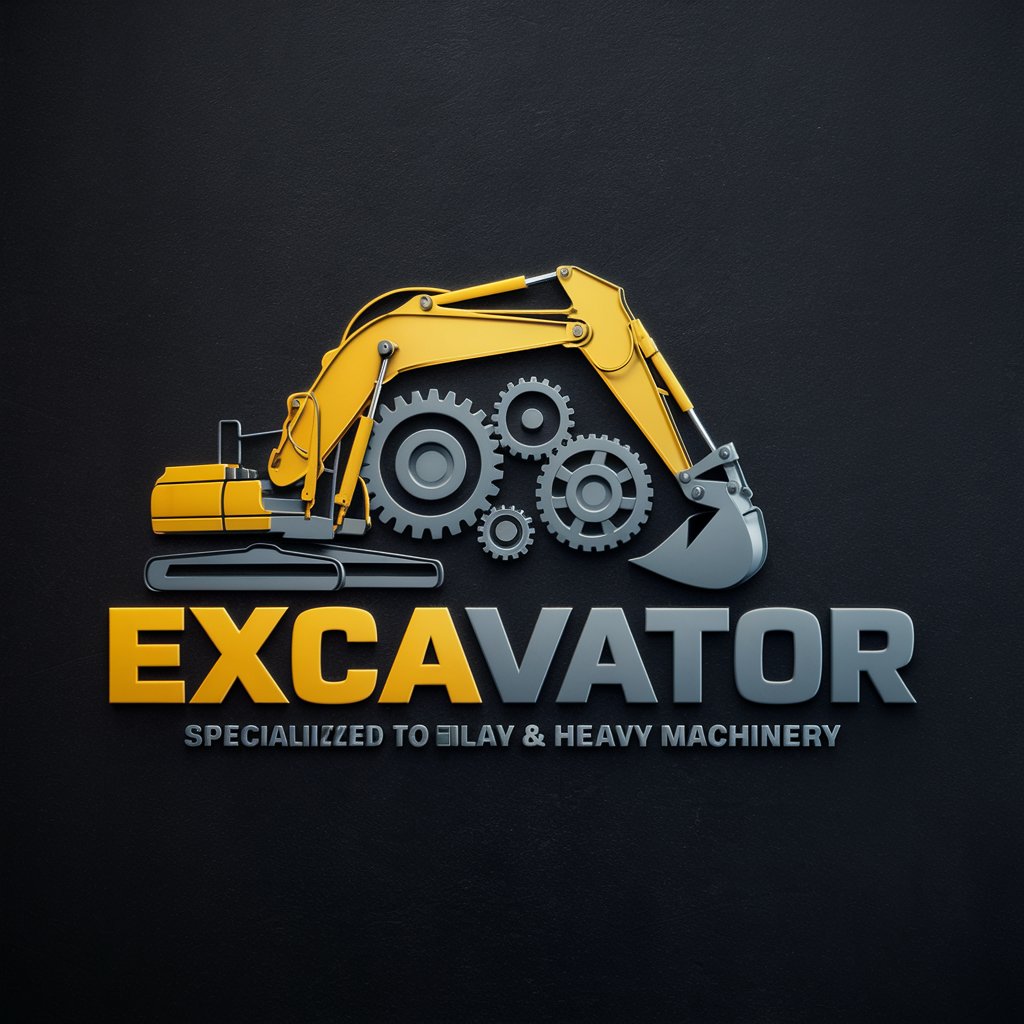Excavator - Excavator Insight and Guidance

Welcome! How can I assist you with your excavator and heavy machinery questions today?
Powering Construction with AI Insight
Can you explain the different types of excavators and their primary uses?
What are the key maintenance tips for prolonging the life of heavy machinery?
How do hydraulic systems work in modern excavators?
What are the latest advancements in excavator technology?
Get Embed Code
Overview of Excavators
Excavators, often referred to as diggers, are heavy construction equipment consisting of a boom, dipper (or stick), bucket, and cab on a rotating platform known as the 'house.' The house sits atop an undercarriage with tracks or wheels. They are designed for a variety of tasks, including excavation, demolition, lifting heavy objects, mining, river dredging, and construction. Excavators are distinguished by their capability to dig trenches, holes, and foundations with precision and efficiency. For example, in constructing a residential building, an excavator might be used to dig the foundation, install utility pipes, and then backfill the site. Their design incorporates advanced hydraulic systems for smooth and powerful operation, enabling them to handle a wide range of tasks with different attachments, such as breakers, augers, or grapples. Powered by ChatGPT-4o。

Key Functions and Applications of Excavators
Excavation and Trenching
Example
Digging trenches for pipes or cables
Scenario
In utility installation projects, such as water, gas, or telecommunications lines, excavators efficiently create trenches of precise depths and widths.
Demolition
Example
Demolishing buildings
Scenario
Equipped with specialized attachments like hydraulic breakers or crushers, excavators can demolish old buildings, clearing the site for new construction.
Material Handling
Example
Loading and unloading heavy materials
Scenario
Using grapple or clamp attachments, excavators can handle and move large, heavy materials such as logs, metal, or concrete blocks in construction and logging industries.
Landscaping and Brush Cutting
Example
Shaping land or cutting vegetation
Scenario
For landscaping projects or clearing land for construction, excavators with brush cutter attachments can efficiently clear vegetation, trees, and underbrush.
Mining and Quarrying
Example
Extracting minerals or rocks
Scenario
In mining operations, excavators are used to remove overburden, extract mineral resources, and manage materials, significantly enhancing efficiency and safety.
Target User Groups for Excavator Services
Construction Companies
These entities benefit immensely from excavators for a broad range of tasks including building construction, infrastructure development, and demolition, enhancing efficiency and reducing manual labor.
Utility Service Providers
Companies involved in water, gas, and telecommunications services use excavators for trenching and laying pipes or cables, making the process quicker and more precise.
Mining and Quarrying Operations
Mining companies use excavators for earthmoving, extracting resources, and handling materials, which improves productivity and safety in challenging environments.
Landscaping and Forestry Services
Professionals in landscaping and forestry rely on excavators for land clearing, grading, and managing vegetation, which facilitates environmental management and beautification projects.
Municipal and Government Projects
Government entities utilize excavators for public works projects, such as road construction, maintenance, and disaster cleanup, contributing to community development and resilience.

How to Use Excavator
Begin Your Journey
Start by visiting yeschat.ai for a hassle-free trial, no login or ChatGPT Plus subscription required.
Identify Your Needs
Determine the specific type of information or assistance you need with excavators or heavy machinery, such as technical specifications, operating procedures, or maintenance tips.
Input Your Query
Enter your question or topic of interest related to excavators in the provided text box. Be as specific as possible to get the most accurate and helpful information.
Review the Information
Carefully read the provided information to ensure it meets your needs. Utilize the details to enhance your understanding or to assist with your heavy machinery projects.
Apply the Knowledge
Use the information and tips provided to operate, maintain, or make decisions about excavators and heavy machinery. Remember to follow all safety guidelines and best practices.
Try other advanced and practical GPTs
Executive Insights
Empowering decisions with AI-driven insights

Canine Caretaker
Empathetic AI for Dog Care

Polis Analyst
Insightful Political Analysis Powered by AI

Wellness Companion
Empowering Your Health Journey with AI

Palette Playmate
Transform images into coloring masterpieces with AI

Lake
Dive into Lake Knowledge with AI

Code like a senior
Elevate your code with AI-powered insights

TRÂM GPT
Empowering Your MLM Success with AI

台灣會計小幫手 (Taiwan Accounting Assistant)
Streamlining Accounting with AI

AP-e Enhanced
Elevate Your Queries with AI Insight

Best Seller
Empower Your Purchase with AI-Driven Reviews

CCR Promoter
Elevate Your Band with AI-Powered Music Promotion

Frequently Asked Questions about Excavator
What types of excavators are available?
Excavators come in various types, including crawler, mini (compact), wheeled, and hydraulic excavators, each designed for specific tasks and operating conditions.
How do I maintain an excavator?
Regular maintenance includes checking hydraulic fluid levels, inspecting undercarriage components, changing filters and oil, and examining the excavator for any signs of wear or damage.
What safety precautions should I take when operating an excavator?
Always wear proper safety gear, ensure the area is secure, follow the manufacturer's operating instructions, and be mindful of the machine's swing radius and stability during operation.
Can excavators be used for tasks other than digging?
Yes, excavators are versatile machines that can perform various tasks, including demolition, heavy lifting, grading, landscaping, and more, with the appropriate attachments.
How can I choose the right excavator for my project?
Consider the project's size, the type of terrain, the weight of materials to be moved, and any space constraints to select an excavator with the appropriate size, power, and attachments.
